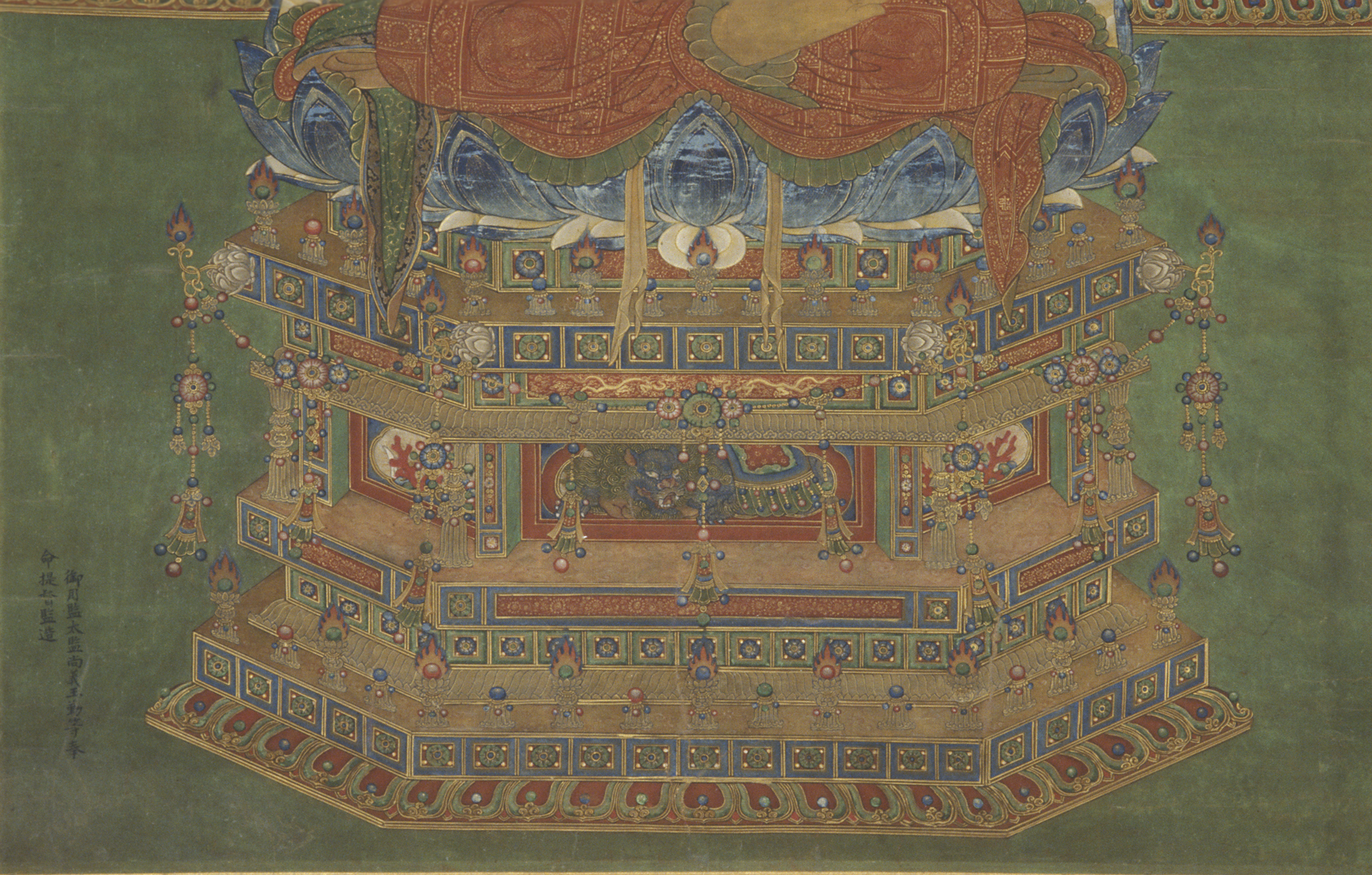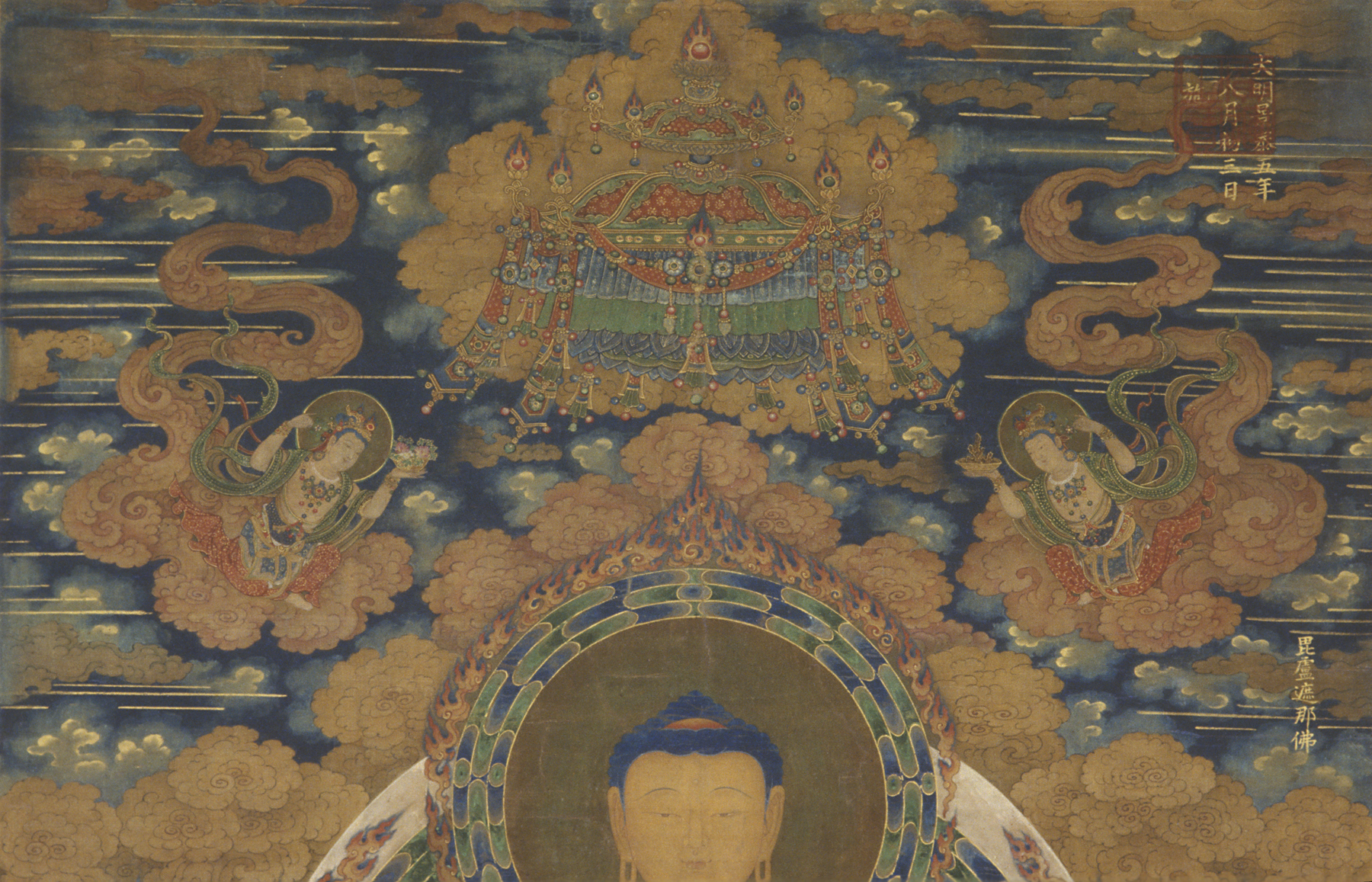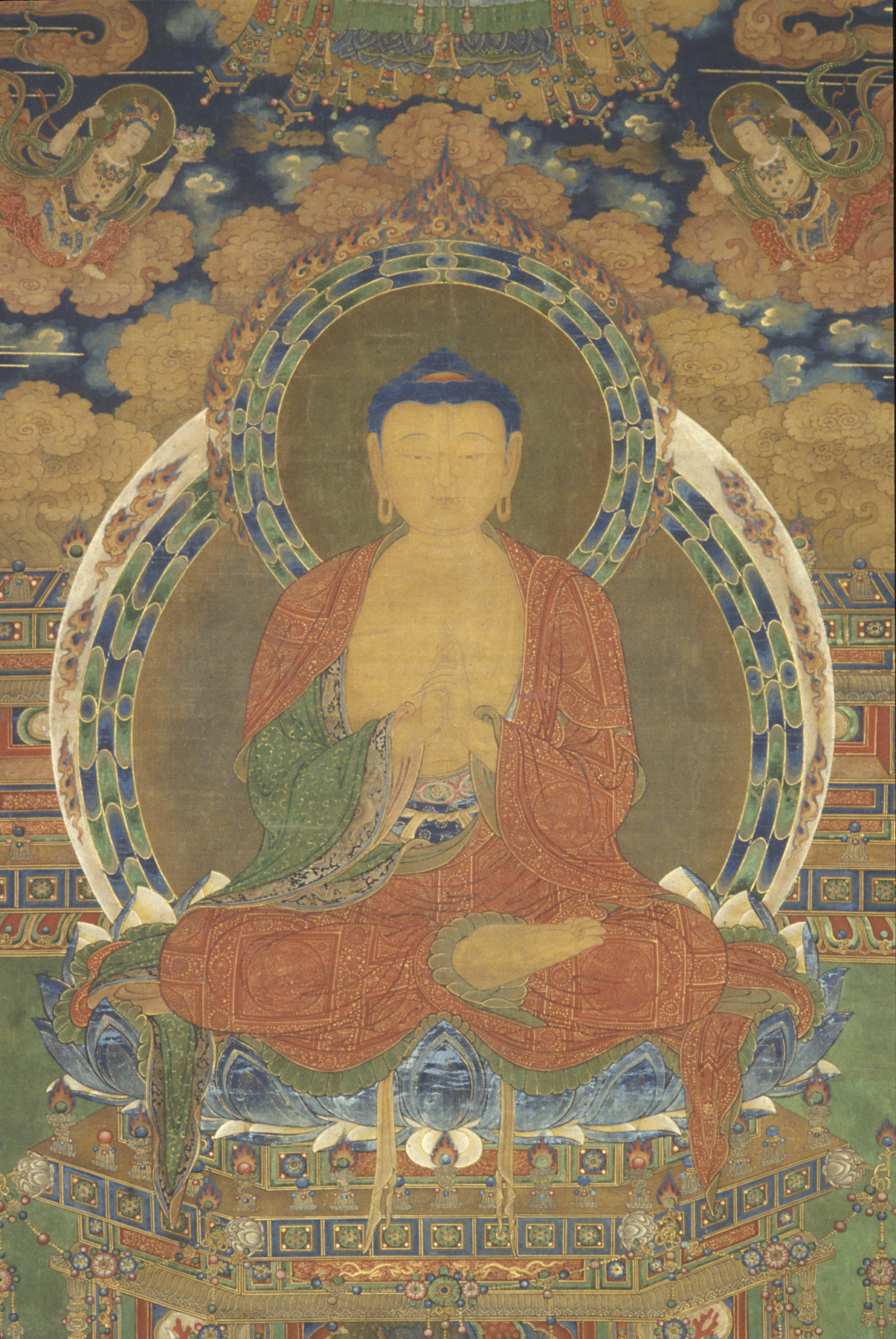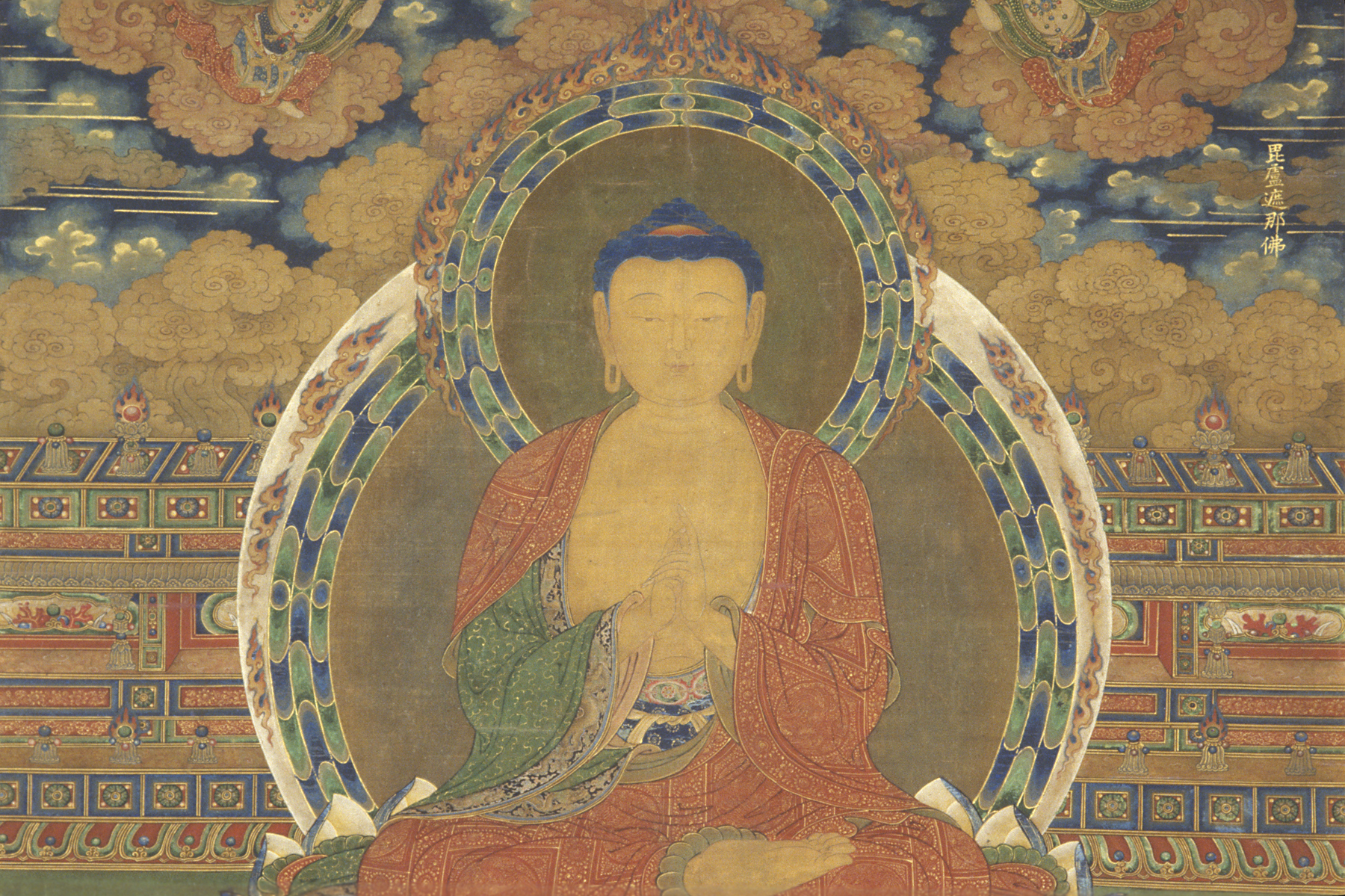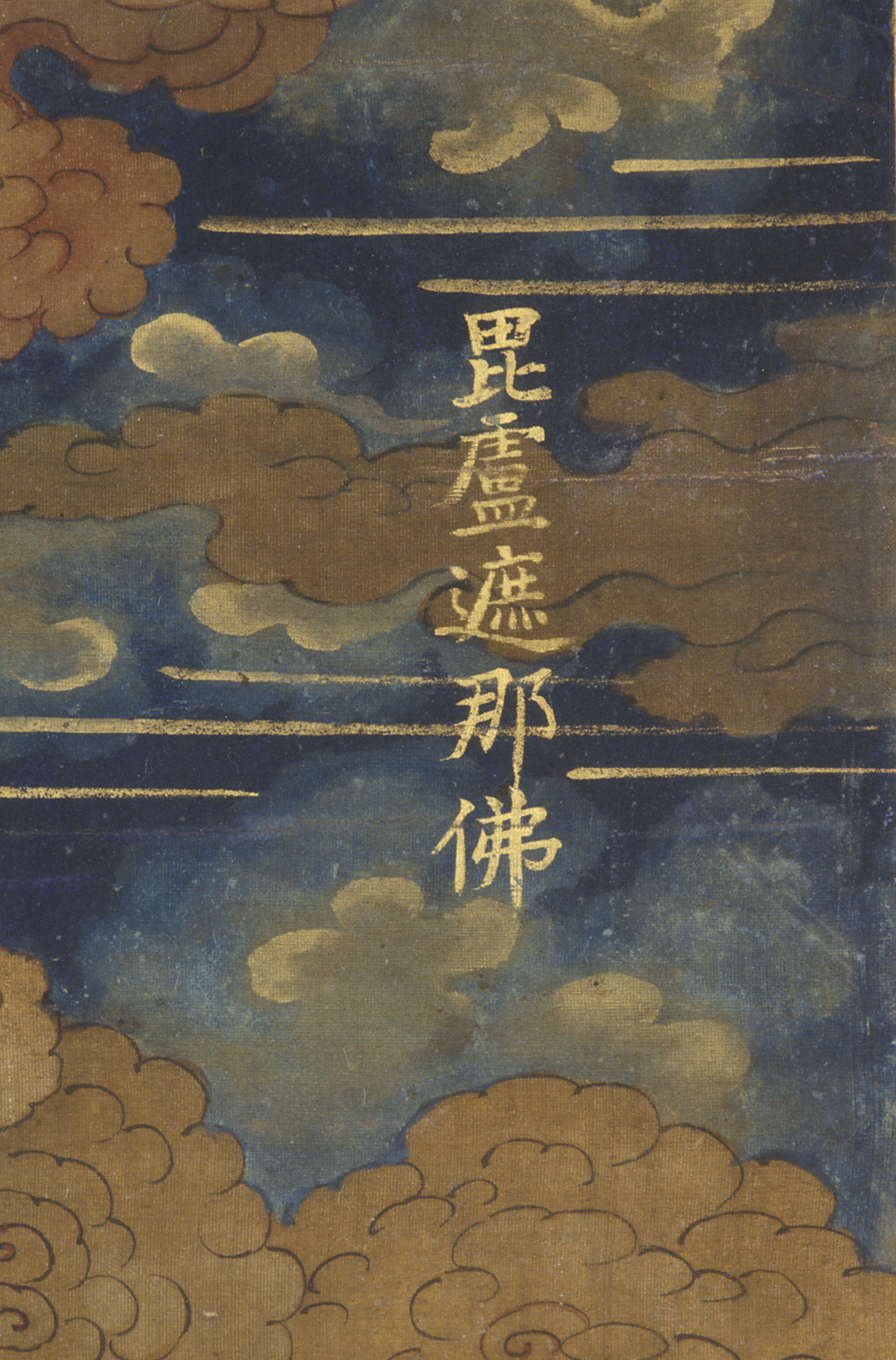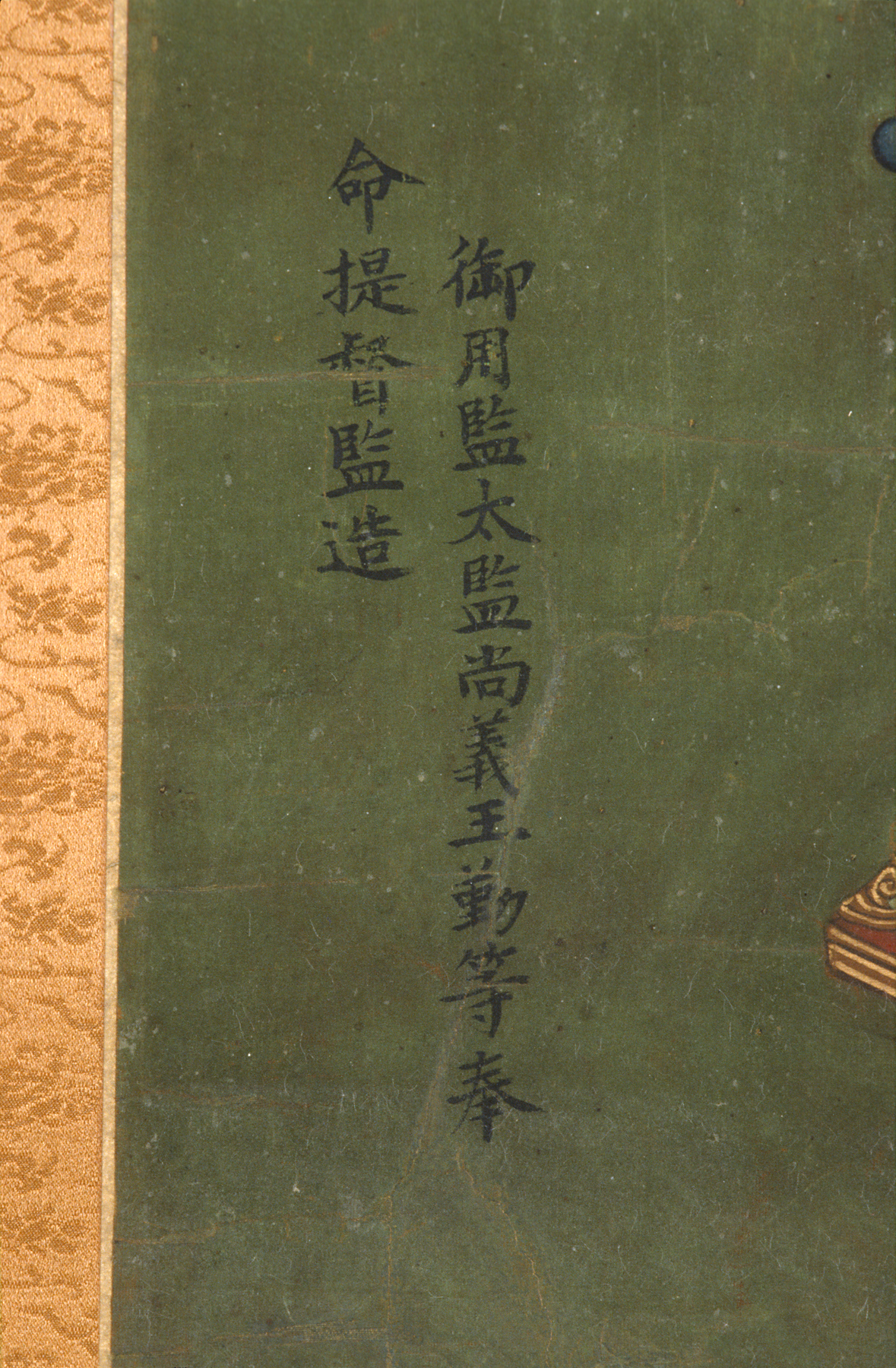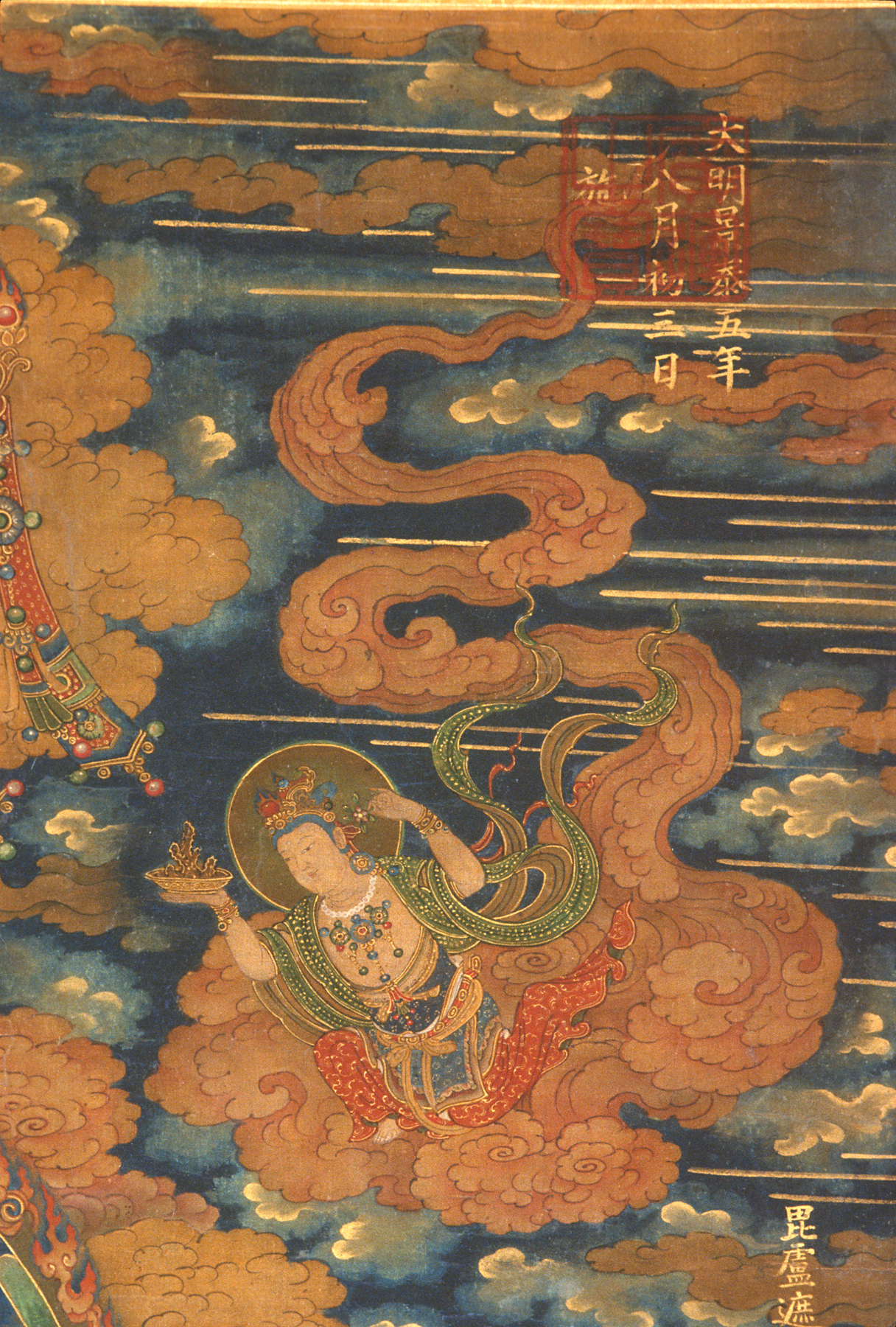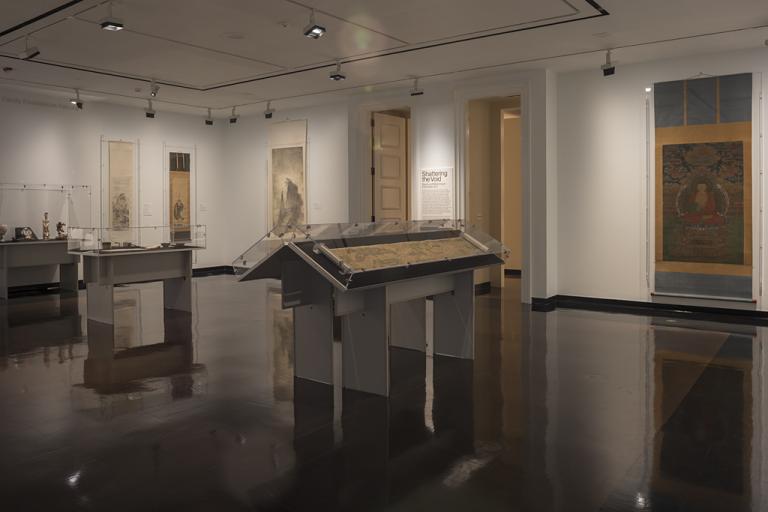Vairocana, unknown maker from China
Artwork Overview
Vairocana
, 1454, Ming dynasty (1368–1644)
Where object was made: China
Material/technique: ink; color; silk
Dimensions:
Image Dimensions Height/Width (Height x Width): 154.7 x 96 cm
Image Dimensions Height/Width (Height x Width): 60 7/8 x 37 13/16 in
Mount Dimensions (Height x Width x Depth): 285.8 x 115.6 cm
Mount Dimensions (Height x Width x Depth): 112 1/2 x 45 1/2 in
Image Dimensions Height/Width (Height x Width): 154.7 x 96 cm
Image Dimensions Height/Width (Height x Width): 60 7/8 x 37 13/16 in
Mount Dimensions (Height x Width x Depth): 285.8 x 115.6 cm
Mount Dimensions (Height x Width x Depth): 112 1/2 x 45 1/2 in
Credit line: Museum purchase: R. Charles and Mary Margaret Clevenger Fund, and Helen Foresman Spencer Art Acquisition Fund
Accession number: 1996.0106
Not on display
If you wish to reproduce this image, please submit an image request

